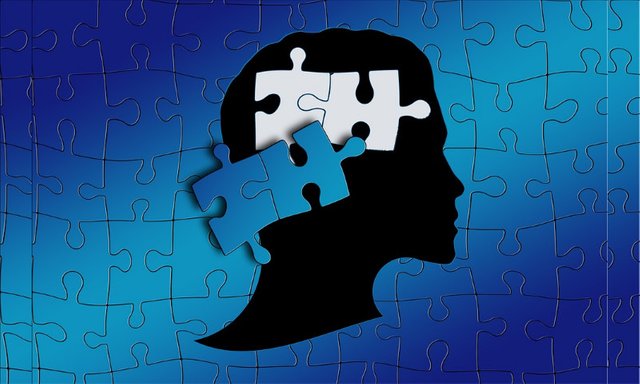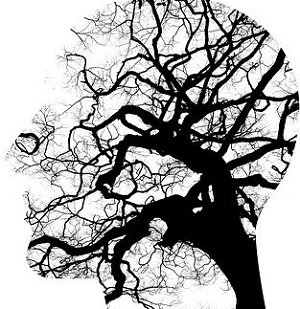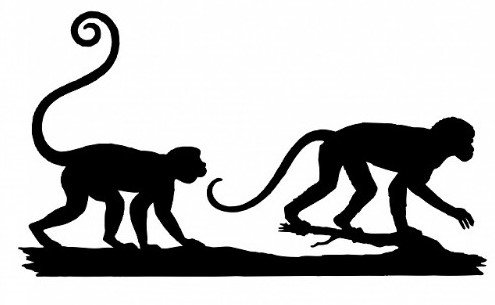Psychology Addict # 51 | Self-Harm – An Overview Through the Biopsychosocial Lens
I know, I know the latter terminology in the title is a bit of a mouthful. Nevertheless, its concept is very straight forward. So, let’s get straight into it 😊
The Biopsychosocial Model

In psychology the Biopsychosocial model is an approach that addresses the role biological, psychological and social factors play in giving rise to behaviours and mental states. In other words, it takes into account the influence internal (e.g. biological aspects such as neurotransmitter activities) and external aspects (e.g. social relationships) have on how we feel and act.
Further, this model proposes that such aspects are not independent from one another. Meaning that instead of acting separately, they rather affect one another. Like this, if a change occurs in any one of them, a change in the other two is expected to be seen. For example, a disruption in a person’s social/romantic relationship (e.g. a fight), prompts change in their feelings, which in turn, affects part of their brain which underlies mood, which causes the person to feel even worse, something that will reflect on their personal interactions … You get the picture. 1
See, this is why sometimes you just have to snap out of this sort of negative cycle. Otherwise, things quickly spiral down. However, it is important to notice here that such chain of events can go both ways: Either through the path that ignites low-moods, or through that which sparks uplifting emotions.
So, can the biopsychosocial model shed some light on self-harm?
Self-Harm

Non-suicidal, self-injury is an intentional behaviour whereby individuals seek to relief feelings of extreme negative emotions by means of cutting their own skin. Typically these are knife cuts to the skin of the stomach and limbs 2.
This is a puzzling kind of behaviour. After all, the great majority of us avoid pain at any cost. Evolution has even equipped us with brain functions and reflexes to do exactly this! All in order to avoid the risks that cuts to the skin may carry, with infection being one of them. Yet, this behaviour not only has been among humans for millennium 3, but it is also becoming more common as of late, especially amongst teenagers 4.
How, then, can we make sense of it?
Research has found that the biological mechanisms underlying self-harm provide an explanation for it. Skin-conductance studies have revealed that individuals with a history of self-harm present higher levels of sympathetic activation when compared to controls (people who do not self-harm) 5. This is a physiological reaction that leads to the experience of intense stress.

Please notice how, in this instance, a change in a biological factor (the activation of the sympathetic branch of the ANS) leads to the alteration of mental states.
But there is a little more to all of this. Evidence shows that in people with history of self-harm, the cuts to the skin trigger the release of opioids at each episode of behaviour 6.
The effect opioids have on providing pain-relief and pleasure explains the little pain and pleasure resulted from the cuts reported by these individuals. Further still, more recent research demonstrated that within self-harmers there are those for whom the sight of their own blood brings an added sense of calmness alongside with reduced heart rate 7.
So, you can see how, for some people, self-harm becomes a way of coping with emotional distress. And while some self-harmers report it as being a relief of overwhelming emotions, others confess to be a means to actually feel something, as they feel devoid of feelings 8
Not Exclusively Human

Intriguingly, such coping mechanism has also been seen in some captive Rhesus monkeys, and very much like in humans these monkeys present an increased level of negative emotion (stress) prior to the behaviour, and release of opioids subsequent to it (Rhesus monkeys self-harm by biting skin areas at which acupuncture is effective 9 10).
Also, some monkeys are more susceptible than others to developing self-harm behaviour. Among them are those which underwent stressful social experiences before reaching two years of age as well as those which have endured frequent stressful events through the course of life 11.
As for humans, some of the predisposing factors are: history of abuse during childhood years12 , borderline personality disorder 13, and acute psychosis14. Self-harming behaviour is also seen in individuals with developmental or intellectual disabilities 15. Sadly, this does not mean that those who do not meet these criteria are immune to it. A growing number of teenagers and young adults with psychological conditions as common as anxiety and depression have been resorting to this behaviour to cope with difficult emotions 16.
A Short Lived Effect

Almost like in cases of addiction, the effect of self-harm (the mood uplift prompted by the release of opioids) is short-lived; which, in turn, causes the behaviour to be repeated. Some self-harmers even report craving it, particularly in contexts of emotional chaos17. It is also understood that just the sight of the cutting object alone may trigger a soothing response, something that further drives the individual to self-injury.
As I recently mentioned on a comment I left not long ago here on the platform, the difficulty with halting addictive behaviour is the reinforcement brought by the immediate positive consequence resulted from it. For some self-harmers, for instance, the reinforcement of their behaviour is not only limited to mood-elevating biological mechanisms. It can also be social 18.
For some individuals the cutting behaviour is their only means (so, they believe) to express their emotional struggles, this then allows others to have an idea of what they are going through, which yields support and care from people. Basically, it’s a cry for help. Such positive reaction, nevertheless, is suspected to work as a reinforcement for the behaviour. Particularly for self-harmers who feel unable to build connections and form secure relationships (those living with attachment disorders).
This is certainly a complex phenomenon in which the acknowledgement of the interdependence of biological, psychological and social factors help to shed light on. And, it’s always important to keep in mind that each case is unique. For the very reason that the aforementioned factors interplay and unfold differently in each individual’s life.
What To Do About It?

I have been asked before if there is a medication for this condition. The answer is no. Nevertheless, there is medication for some of the conditions that might push individuals to resort to this behaviour. For example, depression and anxiety.
This, therefore, points to the fact that in these scenarios what needs to be addressed are the factors that predispose people to self-injury, some of which I mentioned before (unhealed childhood trauma, personality disorders and so forth).
Psychological treatment then becomes an important tool (subsequent to a physical and psychological evaluation). As it equips individuals with more appropriate, adaptive means to regulate emotions, better ways to deal with stressful circumstances as well as behaviours that improve quality of relationships and social skills.
Research demonstrates that brief Cognitive Behavioural Therapy intervention – 12 sessions - yields positive results in these cases by reducing depressive and anxious thoughts, boosting self-esteem and problem solving ability, which consequently leads to a decrease in the frequency of self-harming behaviour 19.
No psychological treatment is a panacea though, and there might be fallbacks. But, in case you self-harm please keep in mind that self-injury does not offer a long-term solution for mental agony. Beware that there are positive alternative ways to both cope with emotional distress and to communicate it to others. Remember that the first step out of that cycle of negativity is just the beginning of a more promising, peaceful future 😊
Reference List:
1 Biopsychosocial model--the integrated approach to health and disease.
2,3 Self-Injury.
4,16,18 Number of girls and young women reporting self-harm in England on the rise.
5 Physiological arousal, distress tolerance, and social problem-solving deficits among adolescent self-injurers.
6 Endogenous Opioids and Nonsuicidal Self-injury: A Mechanism of Affect Regulation.
7 The Role of seeing blood in non‐suicidal self‐injury.
8 Explainer: what is self-harm and why do people do it?
9,11 Self-injurious behavior in rhesus monkeys: New insights into its etiology, physiology, and treatment.
10 Acupuncture analgesia: a review of its mechanisms of actions.
12 Childhood origins of self-destructive behavior.
13 The relationship between non-suicidal self-injury and borderline personality disorder symptoms in a college sample.
14 Overview – Psychosis.
15 Self-injurious behavior among individuals with intellectual and developmental disabilities.
17 Is non-suicidal self-injury an “addiction”? A comparison of craving in substance use and non-suicidal self-injury.
19 Cognitive–behavioural intervention for self-harm: randomised controlled trial.


Thank you so very much for taking the time to read my post my dear reader.
If you feel like it, please share here with us your own positive way of dealing with mental distress. This may even help someone who is trying to find new means to deal with their emotional difficulties :)
Lots of love to you 😊
You were absent for a long time but now you're on a roll!
I had this thought recently that it might be a form of meditation. It gives you focus, and that focus is away from your problems. Also, just as a hot meal might energize you by perhaps damaging you a little bit inside, similarly self-harm might rejuvenate you somehow. Workaholism or an intense exercise session might be other, more socially acceptable, forms of 'punishing' oneself.
Interesting that Rhesus monkeys exhibit the same kind of behavior!
Hi Alexander :)
You can see here the many parallels between self-harm and addiction. And, of course, within the context of addiction there are those deemed 'more socially acceptable' (e.g. the very ones you mentioned) and those less so. Still, this condition is more accurately described as affect-regulation than as addiction.
I had never seen self-harm from this perspective before: a form of meditation ...
I suppose that it's because I see self-injury rather as escapism, and meditation as a means to be able to accept and, consequently, deal with problems. But, perhaps, I am interpreting your observation too literally!
Well, now the summer season lessened my workload I will try to post at least every other week 😃
I really appreciate you taking the time to come around Alexander. It means a lot to me. Thank you :)
Have a wonderful Saturday evening!
I was mainly honing in on the 'focus' part of meditation, I was thinking maybe this intense focus on cutting - using a certain instrument, doing it slowly, not doing it in a way that will actually lead to death, requiring a bit of the precision that is required of a surgeon - I was thinking these aspects of intense focus might help a person forget about their problems for a while. It's of course a complex behavior, but the requirement of 'focus' may play a part in it.
Thanks for your words and wishes! Have a great weekend!
Yep, I agree with you here :)
Well done. Very informative and an interesting read. Great article overall (as always).
There is a specific therapeutic model for people who self injure. It's called dialectic behavioral therapy (DBT). It was developed specifically to treat individuals with borderline personality disorder. It's similar to CBT (in some ways) but also different in many others. It is meant to be done in a group therapy setting and specifically teaches individuals skills for coping with emotional distress without self harming. It has multiple stages of treatment as well with the first one specifically focusing on self injurious behavior and developing safety plans and alternative coping strategies. It's actually a pretty interesting model. It brings in a mindfulness element as well which is pretty cool and "behavioral chains" (I think they are called).
Anyway, thought you might be interested in that as well :)
Posted using Partiko Android
Hey @leaky20
Thank you so very much for adding this invaluable piece of information to our discussion. I did came across DBT through my readings about self-harm. Of, course I am interested in it! So, I truly appreciate you taking the time to inform us what it is all about as well as to compare and contrast it with CBT :)
I was unaware of its mindfulness component, though. I am definitely going to look into this!
Thank you once again leaky20 😊❤
This is actually my first time of coming across the term "Biopsychosocial".
Such an amazing piece Abbey. I really wonder why people would tend to tilt towards self-harm in the bid to counter emotional stress. In my opinion, this is just like a temporary solution to a permanent problem, because it does not take away the problem, it just masks it and provides a temporary relief.
The only self-harm I've witnessed (in media though) was for fun. Have you heard about Tim Cridland (Zamora the Torture King) Abbey? He has superhuman tolerance to pain and performs unimaginable painful stunts for fun - like cutting himself, sword swallowing, piercing etc... Now I'm thinking; what if he developed the act as an adaptative mechanism to ward off emotional stress? Okay I don't know though, but it could be possible.
Nice piece as usual Abbey. Much love from Nigeria
Hello Sammi
Yes Sammi, this is indeed a puzzling behaviour! And the fact that it has also been observed in monkeys makes it all the more intriguing. We may understand why it is repeated, but how it becomes an option for alleviating mental agony ... well ... that is where things get more complex. As, those who resort to self-harm normally live with conditions that cloud their thinking processes.
I have never heard of Tim Cridland, but I will sure google him after here :D One way of finding out whether he began to self-harm in order to cope with emotional pain is to look into whether he had a healthy or unhealthy childhood. Does he live with any psychological condition? When he first started injuring himself was it subsequent to stressful events? How is his psychological health overall? 😊
It always makes me very happy when I hear my posts have provided some new information for those who kindly take the time to read it. So, thank you for letting me know about this being the first time you came across the concept of the Biopsychosocial Model! 😃 Thank you also for reeseeming my posts! You are a star my dear.
It is bed time here.
So, wishing you sweet dreams and sending you bags of love all the way from Portugal :*
❤
Very well put and interesting to read. I have had some experience with self-harming teenagers and unfortunately, all of them had to be institutionalized in order to receive proper help and treatment. The good news is, it worked (at least for those that I personally know). When talking to one particular girl, her explanations why she does it are almost identical to what you have described especially that part with getting relief even when only looking at a sharp object.
I have found that medication + counseling is the key because I observed how only medication or only counseling did not help, at least not in the long run. It was surprising to me when I noticed how patients who received bigger and bigger doses of drugs did not get better until they found a quality therapist to talk to just as those who spent years in therapy did not get better until they started taking medication. I guess those two compliment each other and work best when together. Anyways, thanks for quite an interesting and educational read.
Hello @zen-art 😊
Thank you very much for taking the time to provide our discussion with such relevant feedback. I could not agree with you more. Positive outcomes from psychological treatment are considerably higher when there is a combination of medication and therapy/counselling sessions. Especially when the treatment aims at complex or comorbid disorders.
It is nice to see you around.
All the best,
Dear Abigail, I almost missed this! Good thing I checked out @samminator's blog--he resteemed the post. I will read tonight before I go to sleep ( in just a few moments). This is a topic that interests me very much. I'll be back and edit my comment with a more comprehensive response tomorrow.
Hope you are having a wonderful summer in sunny, breezy Portugal.
Affectionately,
AG❤
Hello my dear friend 😊
I am looking forward to your feedback then!
I will read it this evening with some tea after my busy day :)
I'm back! I reread the piece this morning, and will be reading it again. Though your writing is, as always, clear and evocative, the issue is complex.
As I believe you know, I worked with young people in a very particular setting (as a teacher). 50% of my students were residential. The residence and school were integrated, run by the same administrators. Functions overlapped seamlessly. One thing that was obvious was that a certain culture, a kind of self-reinforcing phenomenon, evolved among the students. Many of these children had to be in a safe, restricted environment, and yet being confined in that culture almost normalized pathological behavior.
Imagine this in a closed setting, where the child is surrounded by therapeutic personnel and reinforcing peers.
As for 'cues'...your discussion reminded me of the response that drug addicts have to paraphernalia, I believe neuroscience, in conjunction with talk therapy, may offer effective and targeted treatments for this kind of response.
Your reference to the sympathetic nervous system was particularly interesting. While this is not something I fully understand, I do know that tapping into the ANS through the vagus nerve has shown good results in treating pain and emotional issues. I went back to read up a bit and refresh my dim understanding of the hypothalamus and the central autonomic network.
You promised us this a couple of months ago. I waited and am so glad I caught it in time. Resteemed--although the article is almost beyond the seven-day window, people still will benefit from reading it.
Thanks, Abigail, for another really important piece.
Be happy and well.
Much love and appreciation,❤
AG
This is a very thorough feedback my friend :)
I was particularly interested in its first part. Yes, I do remember you were a teacher, and the observation you made about the normalization of pathological behaviour among the resident students is very similar to those seen, for example, in hospitals/clinics with units dedicated to treat anorexia nervosa patients. It reminded me of the whole "culture" as you put it, but mostly of the younger girls.
Thank you for sharing with me that paper on the Neuroscience of Drug Craving. I have an extra fascination and passion for the neuropsychology of addiction. Particularly all the mechanisms underlying the appettitive phase (well ... and the consumatory too). I saw that the paper you shared here looks into the former phase through a cognitive neuroscience perspective (😍). It cannot get any better than this! :D
Ok, I better go now....
Wishing you a night filled with sweet dreams!
Much love to you always.
Dear Abigail,
You do impress, as always. Very perceptive. My students were all girls, mostly 14 to 17. I don't like to talk about specific diagnoses, but certainly your insight applies.
Peace, and sweet dreams, also.
With Affection and respect,
AG
Nice piece of text, as usual! And as usual, I have not much to say. This self-harming story looks like to be an "improvement by training" thingie (the words are badly chosen I know): the most one self-harms, the better one is in doing it...
It may be a very short term solution if one self-harms oneself hard enough... ;)
Hey @lemouth. I thought you were on holiday 😊
Nice to see you around these quarters and even better to hear you liked this post. It is a tricky, delicate topic. And yes, it does happen! For some, that short-term solution sure becomes the last.
On a more positive note: Congratulations on your Steemit anniversary! Thank you so very much for pushing through and keeping the community going. I do respect you very much for this. May the coming Steemit years bring you prosperity and lots of smiles :)
I am in holiday, but we have a bunch of work to do at home (painting, upgrading the room of the little one, etc...). Which means that I will be online in the evenings, actually even more often than usual.
Thanks for the nice positive note ;)
Hi Miss Abi , sorry i missed your other posts. how are you doing po? Hope all is well with you. First good read i had today. thanks for sharing this because this is just reality. i am a bit afraid with people who do self harm , but more of i feel sorry about what they're going through . i've met a few before specifically those who uses blade or sharp things to cut that part of their arms that has pulse or just simply cutting their legs and arms with sharp things. it's true that they either suffered trauma from past experiences , lacking self esteem and feeling isolated from the world and not accepted. They also lack attention. But surely with proper care , attention , communication and love , they can be healed and live. normal life.
Have a lovely time ahead miss Abi , thanks as always and bless you more. lots of love from PH from the whole fam 😘❤️❤️❤️
My dear @zephalexia
I hope that this post has made some aspects of self-harming behaviour clearer to you. I believe that whenever we get to understand things better we feel less frightened or intimidated by them 😊 Still, it makes me very happy to see that despite feeling a little afraid of it you still manage to discuss it with understanding and compassion. You have a good heart my dear!
I did notice your absence. And you have nothing to apologise for. Sometime life get that busy, doesn’t it? I am doing very well, enjoying the lighter workload the summer brings with it. I hope you and the minis are all healthy and well, and that Alex is less naughty! :D
Much, much love to you from sunny, hot Portugal! ❤️ 😊
good evening from here miss Abi , glad you have a lighter work load now hehe. thanks for your appreciation . Alex is still the same at school hahaha. roaming atound sometimes she participates on dancing and do colorings , but she's very easy to get tired of it and just wants to play toys there or roam around 😅
Hi Abigail!
Firstly, I'm so glad to see your post here on steemgeeks.net so I can reward it as many STEM tokens as possible :) I'm hopeful that this tribe will produce some really interesting content, of which your work will surely play a major part.
As far as the topic today, and I have a tendency to do this, I think about times where I felt under intense stress and that never once did the thought of self-harming enter my head. Perhaps relatively, the stress wasn't intense at all, or maybe I'm just not wired that way. In 'the end', I chose to talk and to change, and do take reasonable pride in taking that route.
Great to have you back!
Hello Asher 😊
It always makes me happy whenever I hear people say they have managed to take the right turn at the crossroad, which although not necessarily easier (choosing to talk and to change is very hard!) it is that which offers long-term inner-piece and solid accomplishments. Well, it is the route that enables us to build self-esteem. An essential pillar for psychological well-being :)
Thank you so much for informing me about stemgeeks.net (I just had a look) and all those tokens … how cool is that? It would be wonderful seeing more people joining the platform with good, easy to read STEM content!
I trust your days have become less grey and more colourful there in the UK, and that your projects are unfolding as you expected.
I wish you all the best always Asher. It is always great seeing you around! 😊
A magnificent read, as always!
So now it all makes sense to me. It basically has to do with specific groups of neural structures known as the dopamine reward system, is that correct? Cause I'd be surprised if it were so!
Sounds like a downward spiral. My heart goes out to all the people suffering.
Thank you for another thought-provoking piece.
Have a great night!
Good question @lordneroo :)
Let's see if I can reply to it in a clear, concise manner.
There are two important chemicals involved in addictive behaviours (or behaviours with addictive aspects): dopamine and opioids. While the former plays a fundamental part in the "wanting/craving" aspect of it (the pursuit and seeking of the behaviour), the former has its role in the "liking" phase (the one that yields pleasure).
So, yes! The reward system (the mesolimbocortical pathways) plays a role here alongside endogenous opioids systems :)
Thank you for taking some of your time to understand this psychological condition and for looking at it with kindness and empathy.
I wish you a wonderful day my dear. You are a sweetheart! :*
This post has been voted on by the SteemSTEM curation team and voting trail. It is elligible for support from @curie and @utopian-io.
If you appreciate the work we are doing, then consider supporting our witness stem.witness. Additional witness support to the curie witness and utopian-io witness would be appreciated as well.
For additional information please join us on the SteemSTEM discord and to get to know the rest of the community!
Please consider setting @steemstem as a beneficiary to your post to get a stronger support.
Please consider using the steemstem.io app to get a stronger support.
Thank you for the constant support @steemstem! :D